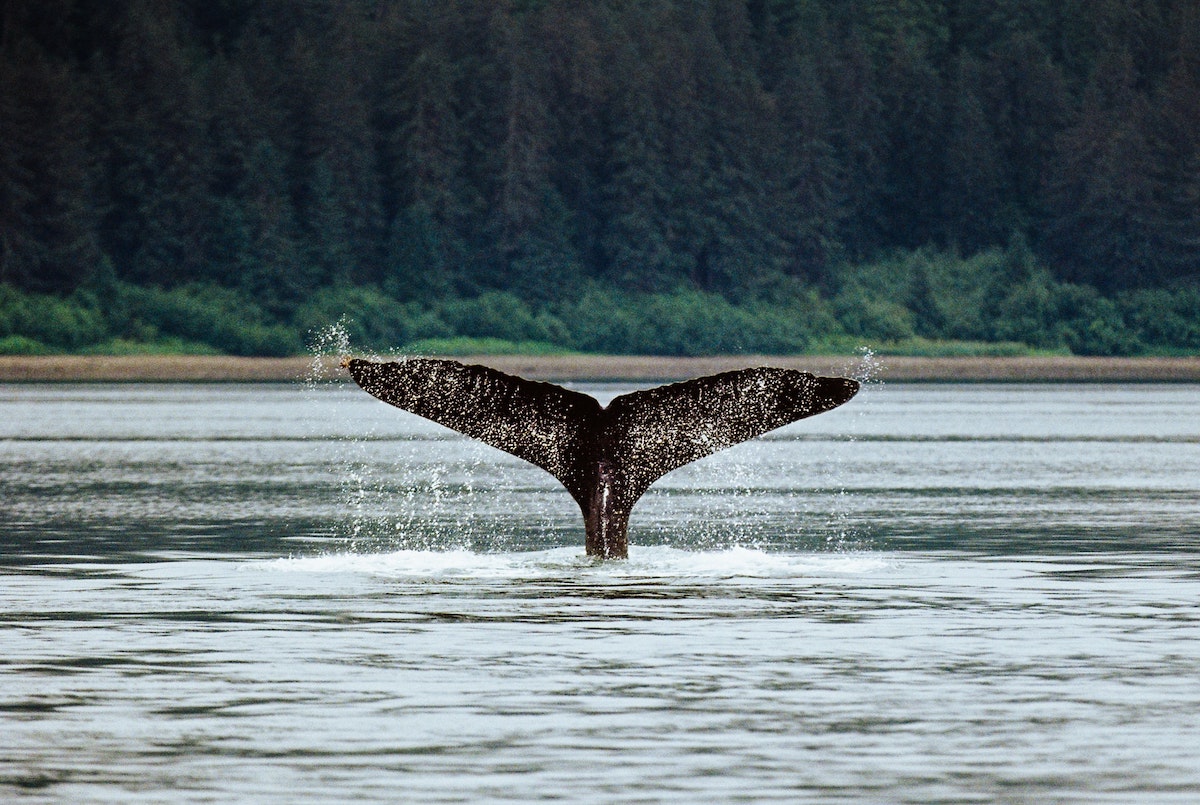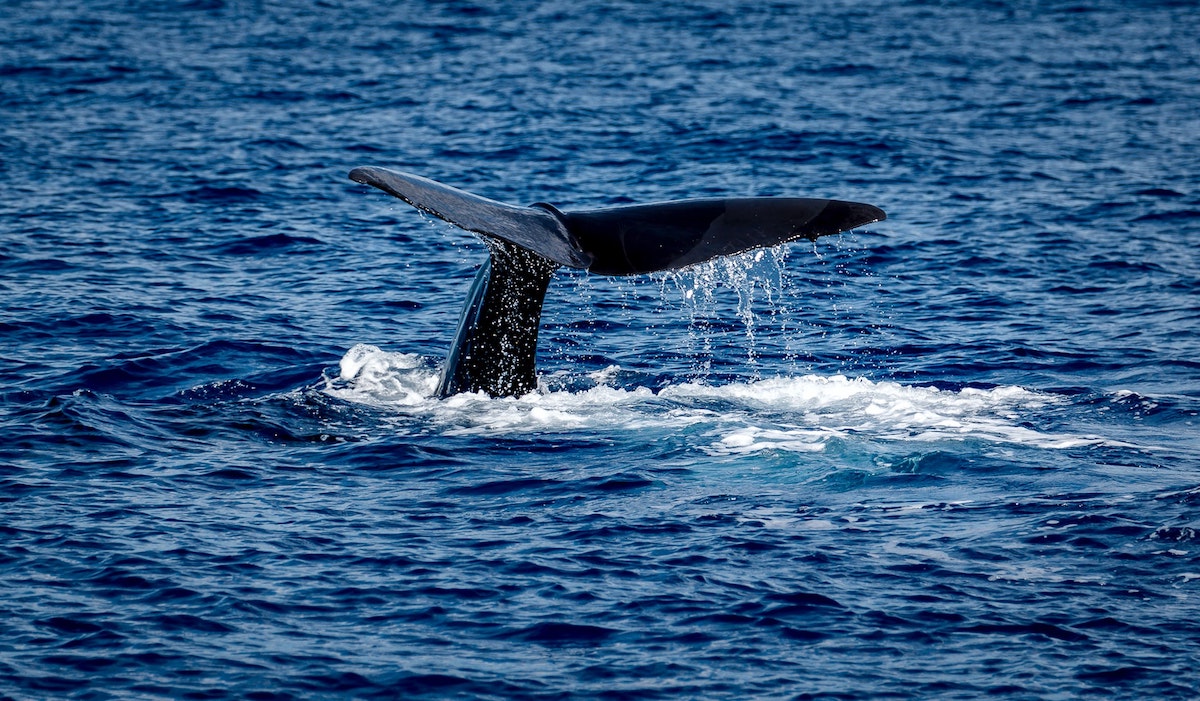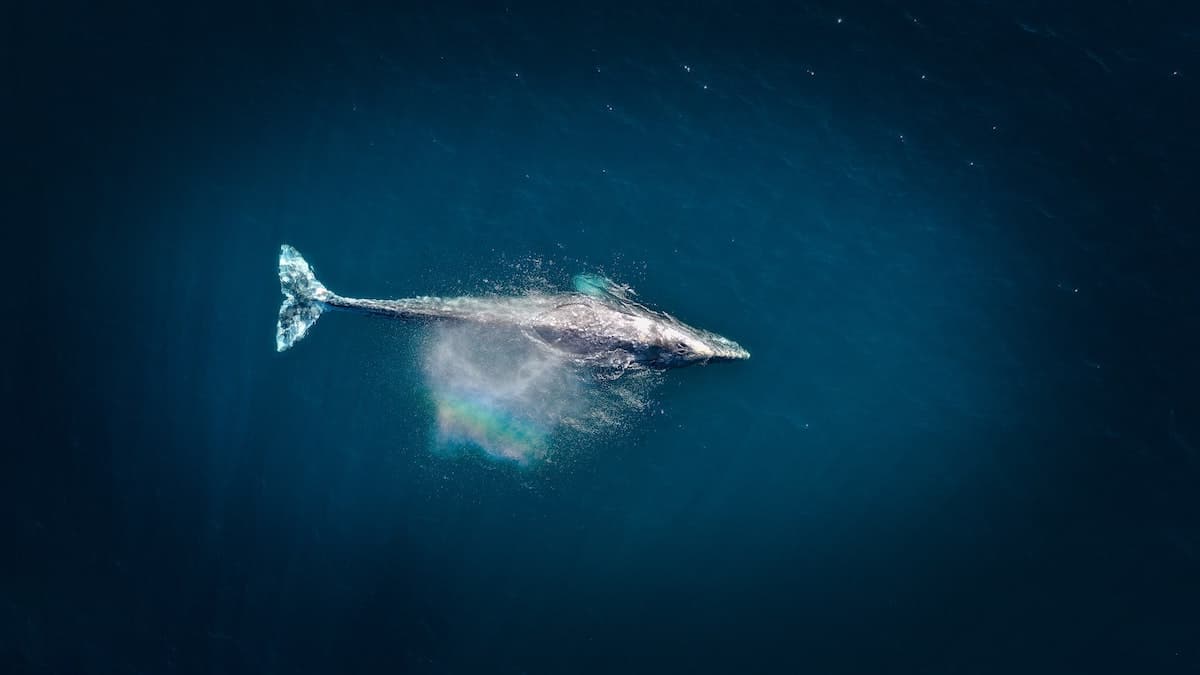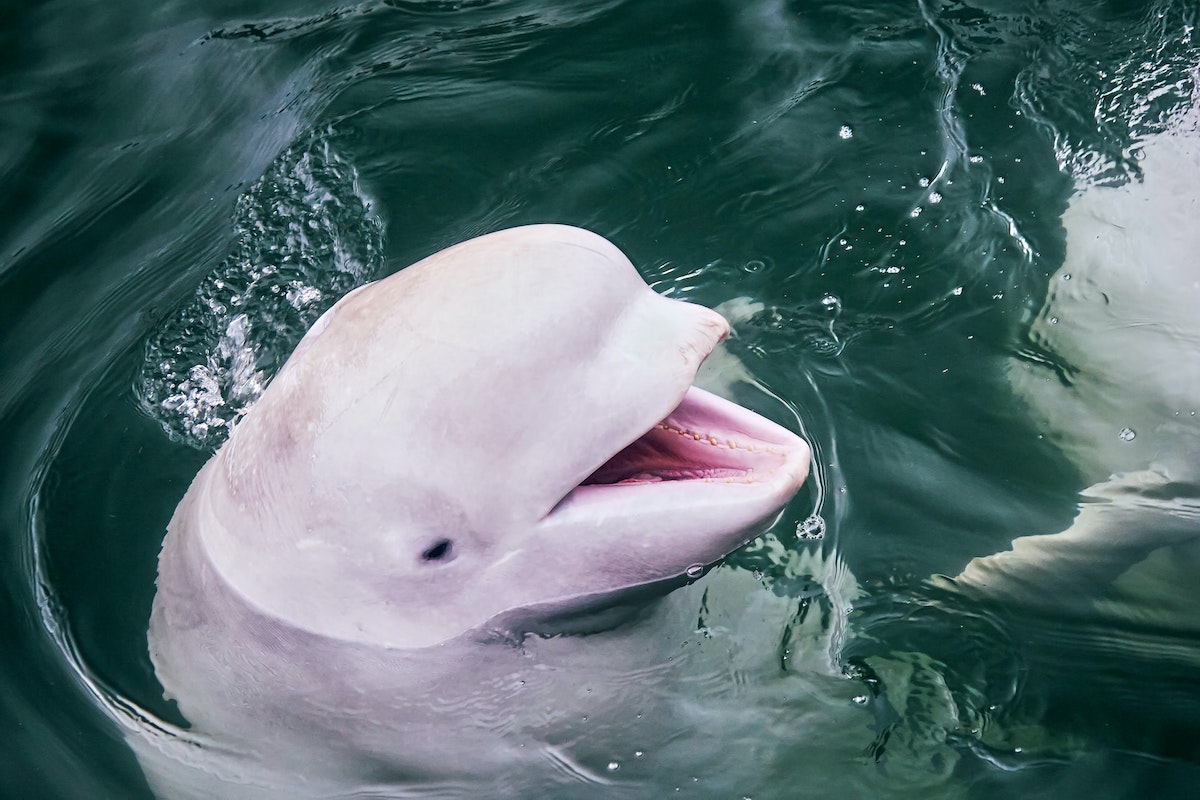Marine Life & Conservation Blogs
The world’s 12 best places to snorkel with whales
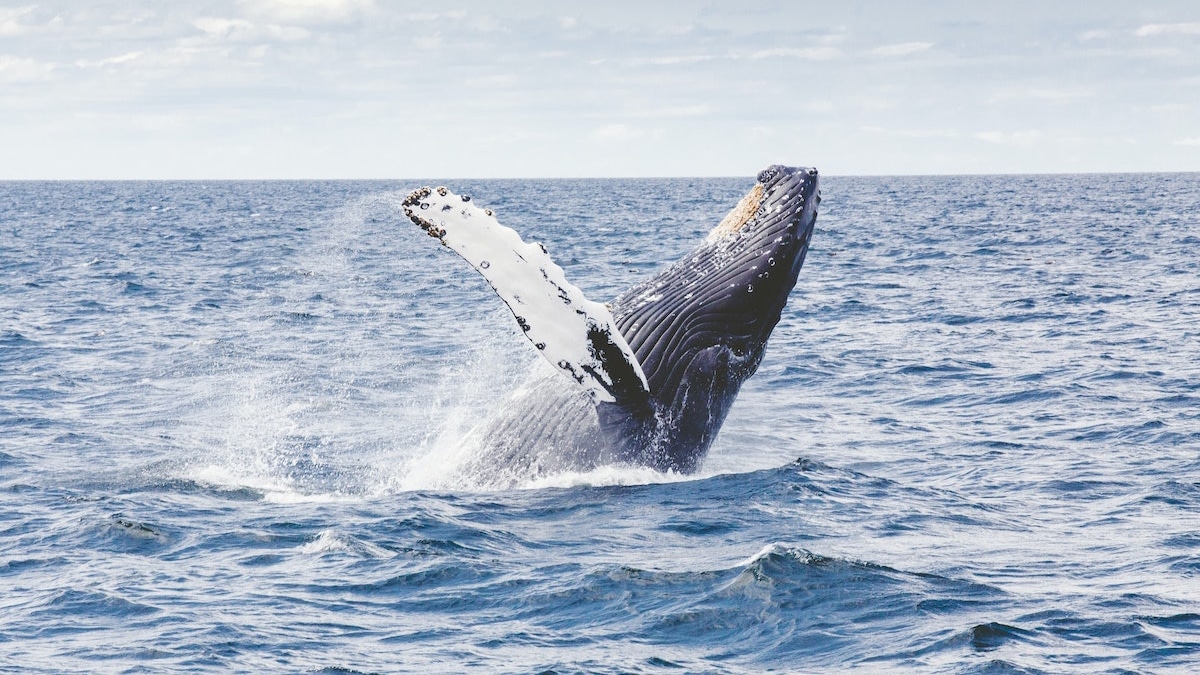
Whales have captivated our imagination for centuries and snorkeling with whales is one of life’s best experiences. Whether you want to meet them in the tropics or under the Arctic sun, there is a whale adventure for you. Here is our guide to the world’s best places to snorkel with whales.
HUMPBACK WHALES
Humpback whales are found at destinations worldwide, making them easy to spend time with. These huge whales are known for their spectacular breaches and complex song and are just as rewarding whether you watch them from a boat or get in the water.
- Tonga
If you want to snorkel in clear blue waters with humpback mothers and their calves, visit Tonga. It is one of the most popular places to swim with humpbacks, where you can choose from day safaris or longer trips. Just make sure you book early so you don’t miss out.
When to go: July to September.
- Moorea, French Polynesia
French Polynesia is the perfect place to combine a luxurious getaway with a humpback whale swim safari and world-class snorkeling. There are endless snorkeling spots, beautiful beachside resorts and numerous whales. If you want to try scuba diving for the first time, the diving in Moorea is ideal for beginners. The reefs are pristine, the waters are sheltered, and you can swim with Moorea’s famously friendly stingrays whilst you’re there.
When to go: July to November.
- Silver Bank, Dominican Republic
The Silver Bank marine reserve provides a safe winter haven for the North Atlantic humpback whale population whilst they gather to mate, calve and raise their young. There are various liveaboard operators that offer multi-day safaris dedicated solely to learning about and swimming with these charming whales. This is a great option if you want to immerse yourself fully in the world of whales.
When to go: January to April.
4. Ningaloo Reef, Western Australia
UNESCO-listed Ningaloo Reef hosts tens of thousands of humpback whales each year and is also a migratory route for dolphins, dugongs and manta rays. Lacking the crowds of Australia’s Great Barrier Reef, it is the most peaceful place to swim with humpback whales in Australia.
When to go: July to November.
- Hervey Bay, Queensland, Australia
Hervey Bay – the world’s first World Whale Heritage Site – has been called the whale watching capital of the world, thanks to its abundant humpbacks. This conservation-focused destination is just a 3.5-hour drive north of Brisbane and offers day trips to swim with the whales.
Time your trip right and you can also enjoy the annual Hervey Bay Whale Festival and Paddle Out for Whales.
When to go: July to November.
- Reunion Island
Réunion lies 550 km east of Madagascar and is a lesser-known humpback whale hotspot. With only a handful of people allowed in the water at any one time, it is a great destination for more intimate whale encounters.
When to go: August to September.
- Iceland
Iceland’s rich waters are a prime feeding ground for humpbacks and offer a unique whale swim experience. Wearing a cozy dry suit, you can spend hours admiring these whales in Iceland’s incredible gin-clear waters.
When to go: June to August.
DWARF MINKE WHALES
These pint-sized whales grow up to 8 meters long and were only discovered in the 1980s. They might be relatively new to the whale watching scene, but they are wonderful to swim with.
- Great Barrier Reef, Australia
Known for being exceptionally friendly, dwarf minke whales create truly memorable encounters as they swim around you, under you and sometimes even between your fins.
Hop on a minke whale safari at Cairns and enjoy. Go snorkeling or try Great Barrier Reef diving whilst you’re there to experience the incredible wonders of this enormous reef system.
When to go: June to July.
SPERM WHALES
Weighing up to 50 tons and reaching 15 – 20 meters long, sperm whales are one of the most sought-after and impressive whale species to swim with.
- Dominica
The sheer drop-offs and deep sheltered bays around Dominica are perfect for sperm whales, and the females and calves stay there all year. After just a short boat ride from the coast, you will be swimming with these amazing animals in calm azure waters.
When to go: Year-round, though November to March is peak season.
BLUE WHALES
Weighing up to a staggering 200 tonnes, blue whales are enormous, and there are two great places you can swim with them.
- Sri Lanka
Sri Lanka is one of the only places where you can swim with blue whales, watch them from a boat, or go whale spotting in small airplanes – which is arguably the best way to get an idea of their sheer size.
When to go: March to April.
- San Diego, California
Baja California hosts the largest population of blue whales in the world every summer and there are a small number of operators that offer blue whale swimming safaris from San Diego. With small group sizes and week-long programs, they are perfect for maximizing your time with these huge whales.
When to go: June to October.
BELUGA WHALES
Beluga whales are easy to recognize thanks to their bright white coloring and rounded heads. These highly social animals are one of the most vocal whales and gather in large groups in Canada.
- Churchill, Canada
Tens of thousands of beluga whales gather each year in Hudson Bay and the small town of Churchill offers unique trips to swim with them. You can enjoy close-up encounters with hundreds of belugas in the water, plus spot polar bears, moose, Arctic foxes and more whilst you’re there.
When to go: June to September.
If you can’t get enough of whales, read the SSI guide to diving with whales to discover even more destinations where you can meet these giants of the ocean.
Kathryn Curzon, a shark conservationist and dive travel writer for Scuba Schools International (SSI), wrote this article.
Blogs
Saba’s Plan for a Coral Comeback

Saba has an exciting new initiative to restore its coral reefs. This new project, running from 2024 to 2026, will focus on reviving key species in the island’s underwater ecosystems. With a collaborative team from the Saba Conservation Foundation (SCF) and Van Hall Larenstein (VHL) University of Applied Sciences, the project aims to restore both corals as well as sea urchins.
This initiative is centered around coral restoration, specifically reviving two essential coral species—staghorn coral (Acropora cervicornis) and elkhorn coral (Acropora palmata). By mapping parent colonies and using a technique known as coral gardening, SCF will create and maintain coral nurseries. These corals will eventually be outplanted at key reef sites around Saba to not only expand the number of coral colonies, but also provide essential fish habitat. The project focusses on installing coral nurseries, training staff with the newest techniques and starting with the restoration of key reef sites.

Reef Cleaners to the Rescue
It’s not just corals getting a makeover—this project also shines a spotlight on the essential role of grazers, particularly sea urchins. VHL is leading the charge on cultivating and restocking two key sea urchin species, West Indian sea egg (Tripneustes) and long-spined sea urchin (Diadema), known for their ability to keep algae in check. By removing algae, which are important competitors of corals, they help the coral to thrive. By restoring these “reef cleaners,” Saba’s project will give corals the breathing room they need to grow, setting the stage for a healthier, more balanced marine ecosystem.
From Tiny Urchins to Big Goals
The project will be funded as part of the Dutch Government’s Nature and Environment Policy Plan (NEPP) 2020-2030 for the Caribbean Netherlands, a comprehensive initiative aimed at conserving and restoring the unique natural environments of the Dutch Caribbean islands, including Saba, St. Eustatius, and Bonaire. This project is aiming for big milestones: build and maintaining coral nurseries, the expansion of urchin cultivation facilities, and the creation of a dedicated research center. By 2026, the project hopes to ramp up coral and grazer restoration, with the ultimate goal of extending these efforts across the Dutch Caribbean. By linking local initiatives to broader regional goals, Saba’s restoration project promises to leave a lasting impact on both the environment and the community.
Find out more about the DCNA at dcnanature.org.
Blogs
Reef-World marks two decades of marine conservation: strengthening impact amid coral reef threats

Empowering ocean stakeholders to tackle future challenges and ensure the survival of coral reefs and humanity
2024 marks the 20th Anniversary of The Reef-World Foundation’s tireless efforts for global coral reef conservation. The UK charity is the international coordinator of the UN Environment Programme’s Green Fins initiative, known as the leading voice in sustainable marine tourism. Today, Reef-World released its 2023-2024 Impact Report outlining a year of substantive growth and impact in its marine conservation programmes.

Impact Report Highlights:
- Impressive improvements in environmental behaviours to protect coral reefs by the marine tourism industry as the global participation of Green Fins increases.
- Continued capacity building for government and NGO staff to effectively manage marine tourism activities in Asia, Caribbean and Red Sea regions.
- For the first time in Green Fins’ 20-year history, tourism operators have achieved ‘Best Environmental Performer’ status by demonstrating the lowest possible environmental impact in their environmental assessments. In 2024, three dive operators achieved this challenging milestone.
- Significant increases in global participation of Reef-World’s innovative digital conservation tools.
- 138 Green Fins dive operator members achieved the strict threshold for PADI Eco Center recognition.
- Developed four new educational materials and translated two into 16 languages to support the marine tourism industry in achieving sustainability targets.
- Establishing a new Reef-World Development strategy and recruiting new roles – Development and Programmes Managers.
- Reef-World’s board welcomes new Chair and Trustees strengthening organisational leadership.

Reef-World started as a one-person mission to inspire and empower communities to act in conserving and sustainably developing coral reefs and related ecosystems. Today, the team of 12 continues to meet this mission by inspiring and empowering the global marine tourism community to be exemplary sustainability leaders by using the Green Fins guidelines and tools to simultaneously use and protect the world’s precious reefs.
In April 2024, the fourth global coral reef bleaching event was confirmed. Reef-World’s work has never been more urgent as the marine environment, and the benefits they provide humanity, continue to be eroded by global threats. The reduction of local threats, like those from the marine tourism industry, is an essential step to ensuring a future where coral reefs survive and continue to support the millions of people who depend on their ecosystem benefits. Reef-World’s work buys time for coral reefs and related ecosystems to be resilient to the impacts of global threats.
“Right now our corals are facing the greatest fight of their existence as the terrifying predictions of the steps towards their complete extinction are starting to come true. But all is not lost, reefs are resilient and they have existed on this planet for millions of years. We must take action now, to buy time for reefs by reducing threats facing them and allowing them to react and adjust to the changing environment they need to survive in.” – Chloe Harvey, Executive Director
Looking Forwards:
Like coral reefs, the Reef-World team needs to be resilient in the face of the complex challenges of the conservation sector. Reef-World has invested significantly in developing a Culture of Care to ensure the well-being of its team on a daily basis, continuing to be an exemplary employer to enable its team to best achieve the mission for coral reef conservation.
With the foundations of a Culture of Care and organisational development laid, Reef-World is emerging from the end of a natural organisation life cycle, that brings the challenges of growth and scale, stronger than ever. With a new strategy in place to generate much needed resources, Reef-World is excited for the opportunities to leap forward, continue to scale our impact and lean into new innovations and untapped opportunities for marine conservation.
We continually strive to become a forward-thinking organisation that delivers on our goals and commitments to our stakeholders with fresh approaches and not being afraid of steering away from a “normal approach.” This approach is not only applied to our programmes of work but also internally and carries over to our Culture of Care for our team.” — JJ Harvey, Operations Director

The Reef-World Foundation is immensely grateful for the continued support of its grant funders: UN Environment Programme, IUCN’s Blue Natural Capital Financing Facility, Adventure Travel Conservation Fund, PADI Aware Foundation, and World Nomads Footprints Program.
Reef-World would also like to express its gratitude to international partners whose vital support has resulted in significant tangible benefits for our work and mission: PADI; Professional SCUBA Schools International (PSS); Explorer Ventures; 1% for the Planet; ZuBlu; Snorkel Venture, GSTC; Dive O’Clock; Seven Dragons; DiveAssure and Eco Beach, without whom these achievements would not be possible.
The full 2023–2024 Annual Impact Report is available on Reef-World’s website.
-

 News2 months ago
News2 months agoIconic SS United States to become the World’s Largest Artificial Reef
-

 News3 months ago
News3 months agoBook Review – 52 Assignments: Underwater Photography
-

 Gear News3 months ago
Gear News3 months agoDYNAMICNORD – New German diving brand enters the British market
-

 News3 months ago
News3 months agoExploring Cenote El Pit: A Diver’s Dream
-

 Gear News3 months ago
Gear News3 months agoTry BARE drysuits (and maybe even win one!) this Friday with Sea & Sea at North West Dive Fest
-

 Marine Life & Conservation3 months ago
Marine Life & Conservation3 months agoBook Review: Coral Triangle Cameos
-

 Blogs2 months ago
Blogs2 months agoDive the Egyptian Red Sea this Autumn with Regaldive
-

 News3 months ago
News3 months ago2024 Ocean Art Underwater Photo Competition Announced


